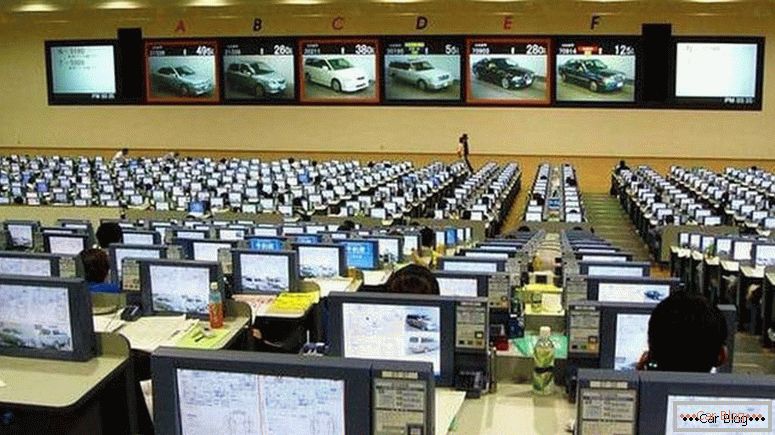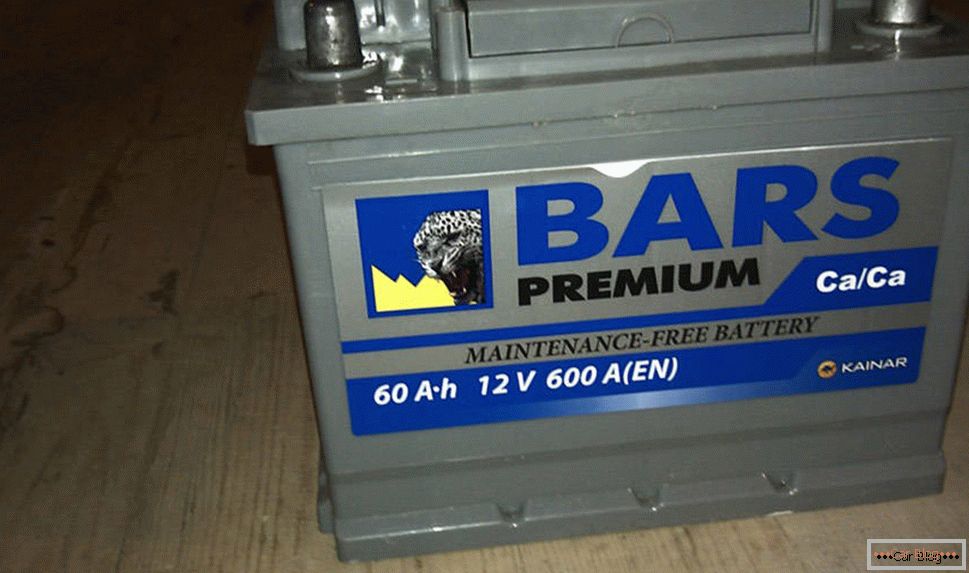Japanese cars are considered a model of quality, reliability and durability. No exception and Mitsubishi Lancer IX, which, with virtually no competitors in its niche, quickly gained popularity among domestic motorists and still holds the leading position in the number of sales. This is facilitated by the unpretentiousness of the car, ease of operation, successful, albeit slightly aggressive design, a wide range of available modifications and options. Nevertheless, many are discouraged by dubious ergonomics of the cabin, the high cost of spare parts and materials. Let's try to understand in more detail the strengths and weaknesses of the model, to determine how successful and promising it is.

History tour
The predecessor of the modern Lancer was the Cedia model, which saw the world back in 2000. It practically did not go beyond the Asian market, however, it became a fundamental model for the future, embodying technical solutions that in 2003 allowed the Lancer IX to be presented in the USA and Europe. The first buyers were inspired by the simplicity and relative cheapness of the model, and after that its other positive qualities were revealed.
At first, in Russia and the CIS, Lancer could not compete with its “elder brother” - Mitsubishi Carisma. The rival exceeded the new model in the convenience of the cabin, had a more aristocratic design and was in the same price category. However, a year later, in 2004, the production of Carisma was stopped, and the Lancer gained deserved popularity both as a city car and among fans of aggressive driving, which was facilitated by the appearance of the Evolution sports modification.
Look under the hood
With the power units Lancer Mitsubishi engineers decided not to experiment. Only four-cylinder in-line engines are available to buyers, the volume of which varies between 1.3 and 2.4 liters. The most widely used modifications with a 1.6-liter engine - they have the ratio of power and fuel consumption is optimally balanced (up to 125 hp. With 8.0 liters in the combined cycle). A nice bonus of the ninth generation was the introduction of the GDI system. Most cars of this model use AI-95 gasoline as fuel, but there are also versions for AI-98.

The weak points of the engine are the radiator and the ignition system. And if in the latter case, the installation of original spare parts is advisable, in the event of a radiator failure, it is better to purchase a high-quality replica. The internal combustion engine with a volume of more than 1.5 liters may have problems with the CPG, especially when driving carelessly. They manifest themselves in the "occurrence" of piston rings, which may be due to an insufficiently strong structural material of the block or overheating caused by poor oil circulation. Usually the problem is eliminated by boring the cylinders.
With the convenience of controlling the transmission while driving Lancer problems will not arise - everyone can choose the gearbox to your taste. Versions with five- and six-speed mechanics, a four-stage “automatic” and even a CVT are available. All boxes are highly reliable and have a long life, however, the manual transmission of 1.3 and 1.6-liter engines may have problems with the input shaft bearings. It is advisable to replace them after 100-150 thousand kilometers.
Recommended article: Toyota Avensis 2013 with beautiful headlights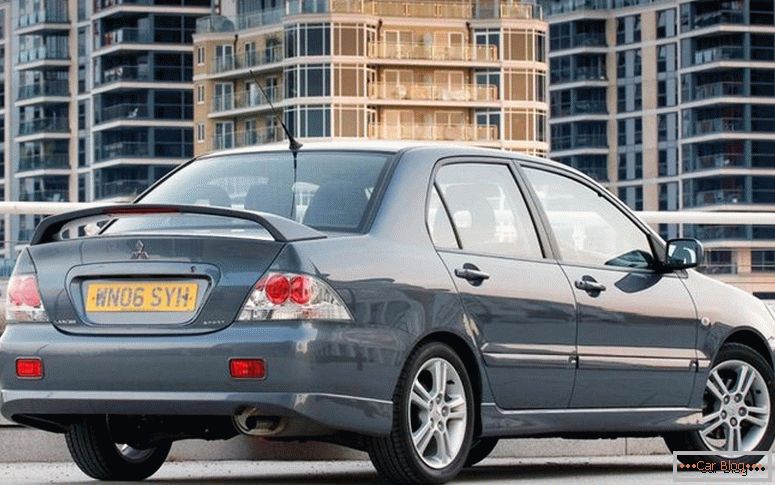
From the transmission, torque can be transmitted directly to the front drive axle or, in some versions of the Cedia, through the all-wheel transfer box. During the operation of both front-wheel drive and all-wheel drive Lancers, it is important to pay attention to the state of the CV joints - they tend to wipe. The main advice - do not save on lubricants, and then the work of the transmission will be stable and reliable.
We are looking for body problems
More than 90% of Mitsubishi Lancer IX cars were delivered in a sedan, but sometimes there are also station wagons. The quality of manufacturing of both types of bodies conforms to Japanese standards - high-quality metal, durable, but at the same time sufficiently ductile to provide deformations extinguishing the load during a collision. But on the part of collisions, dents, scratches and other body defects, the used Lancers will leave many other sports and pseudo-sports cars far behind - this model is beaten very often.
Pay attention to the condition of paint coatings - the factory have a small thickness of the crane, however, are stable and even. Damage to such coatings practically does not grow. An increase in thickness, non-uniform color or excessive gloss of individual body parts will indicate the presence of more or less serious masked defects.

Look for traces of corrosion. Usually, the rear arches are the first to suffer - the inner seam almost inevitably becomes rusty after 5-7 years of operation. From there, corrosion spreads to the junction of the arch and wing, in advanced cases it moves to the outer part of the wings at the rear doors. The presence of such obvious signs of neglect of body care will almost certainly indicate the need for welding work on internal surfaces.
Other possible, but far less significant corrosion centers are the thresholds, the lining of the door opening limiters, the door itself (especially in the lower part), the edges of the hood, the joints of the windshield, the trunk. There are signs of rust and in the cabin, for example, on the levers of unlocking the trunk and gas tank.

Was there an accident?
Some of the main features that determine the eliminated consequences of accidents do not work with the Lancer. So, it would be a mistake to say that the car was involved in an accident, if the hood was removed - sometimes this operation is performed in order to lift the back part of the hood for the summer period. On versions with powerful engines this is the easiest way to improve the natural cooling of the engine compartment by the oncoming air flow. Both the front and rear optics of the Lancer are made of soft plastic of extremely poor quality. Already after 100 thousand kilometers, it is overwritten, turns yellow, does not transmit light well and impairs the appearance of the car. So the new headlights still do not mean that the old ones were broken.
Recommended article: Nissan Patrol with mileage: "diseases" and their effective treatment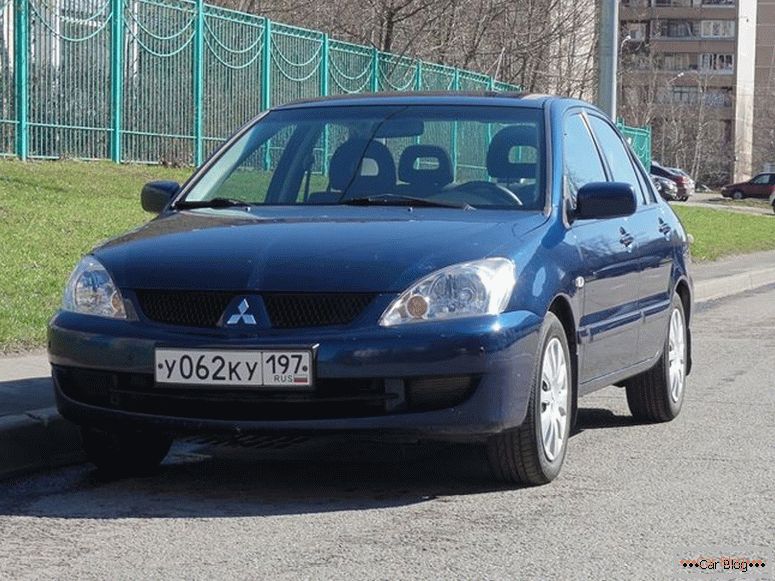
But such an inconspicuous detail, like the ears of the front bumper, will help to understand whether there has been a frontal impact. Plastic bumper durable and can withstand even when the tips of the spars are affected, but the ears break off in almost any accident, so the traces of their recovery should make you think about the condition of the body. In addition, it is important to pay attention to the state of the front jet thrust - if it was collapsed, the owner did not care much about the car.
If possible, inspect the bottom. Traces of stones and elongated cup suspension will tell about the aggressive nature of driving the previous owner. It is very likely that with a more detailed inspection of such a car there will be replaced body parts or running gear parts that were damaged as a result of recklessness.
Look around in the cabin
Immediately warn that high or full people in the cabin Lancer will be quite uncomfortable - low roof and lack of steering adjustments are felt. But this is typical of all instances of the model. What to look for when examining a particular car?
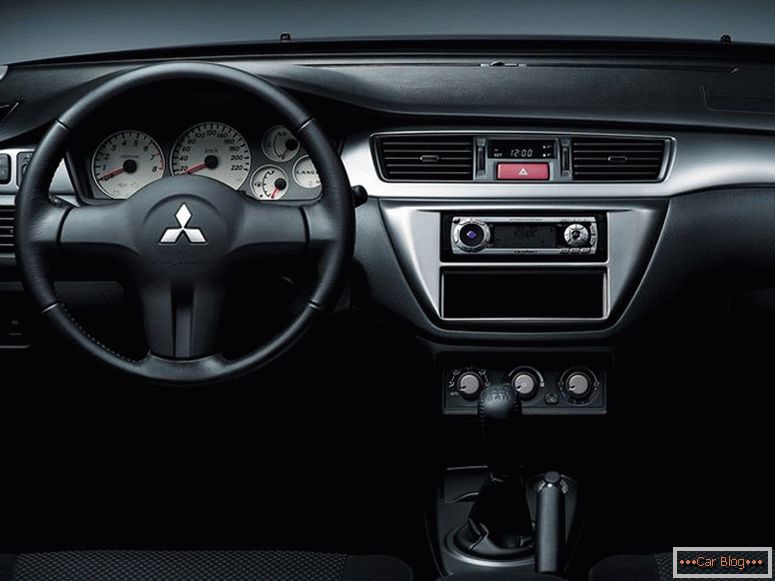
The first thing that catches the eye in the interior of used Lancer economy-kits - the poor quality of the manufacture of seats. We are talking not only about the worn fabric and the push-through seal, but also about the frame, which can be completely broken to 200 thousand kilometers. Such seats need to be changed immediately. Second-hand seats from Intense cars, which can be purchased at car disassembly or ordered online, are perfect.
As finishing materials, on the contrary, the basic equipment wins. Its plastic elements, although they quickly accumulate dust, are easily cleaned with special chemical compositions, but with worn leather and darkened silver steering wheel and torpedo inserts more difficult. As a rule, only replacement helps, which will certainly come cheap. By the way, often the skin of the front panel is altered to mask the traces of an accident - be vigilant.
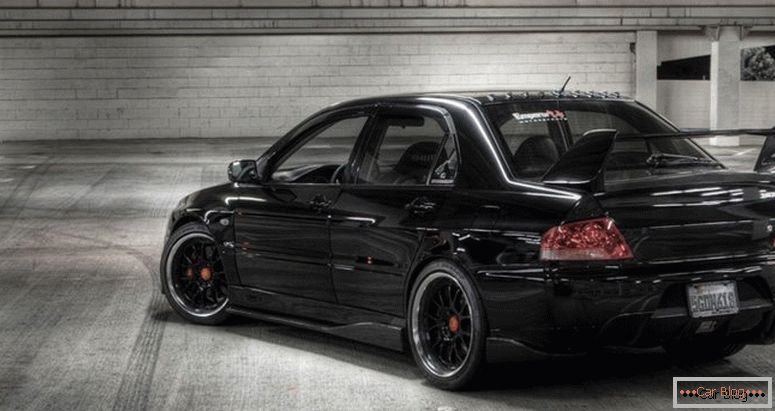
Automatic climate control works perfectly. If it is not, pay attention to the work of the stove - the cable of the temperature flap often binds and breaks. A common phenomenon on used Lancerah became idle air conditioning. It can fail for various reasons, but most often the tube is ground by the protection of the crankcase of the engine. Dangling cables windows - also not uncommon. And after a long drive on bad roads (200 thousand kilometers and more) the salon begins to “sing” - plastic parts rub against each other and emit an unpleasant creak. Fastening work will help fix this problem.
Recommended article: External and internal tuning for Mazda 6Electrics and control mechanisms
And analog electrics, and electronics Mitsubishi Lancer IX is extremely high reliability and durability. The "weak link" can be called the contact group of the ignition lock, but problems with it are the exception rather than the rule. Otherwise, it is enough to follow the elementary rules of electrical equipment maintenance, for example, to change the brushes and bearings of the generator every 100-150 thousand kilometers, to monitor the state of the plates and the level of battery charge. Take care of the starter - when it is overloaded there is a high risk of breakage of the teeth of the contact pair of gears.
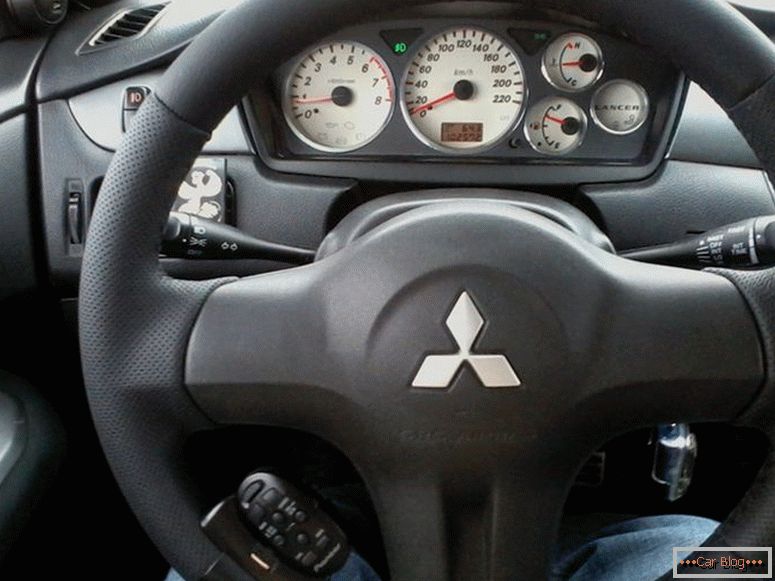
Not without strangeness in the standard installation of lighting devices. So, to replace some burnt out lamps you will have to arm yourself with a soldering iron. Often, in order to simplify the process, non-standard cartridges, connectors or terminals are installed in the places of their attachment.
Lancer has a pretty gentle braking system. It is characterized by corrosion of cylinders and tubes, souring, breakage of ABS sensors. Nevertheless, all this can be easily prevented by performing a full range of diagnostic, cleaning and adjusting operations during vehicle maintenance. In the overwhelming majority of cases, sensors damage just to the service station, so contact only reliable services. The pad resource is more than acceptable - up to 50 thousand km from both the original and good replicas.
Summing up
Mitsubishi Lancer IX - a quality car that can faithfully serve the new owner, even after a significant run. But, like any technique, it requires careful and careful attitude from the first days of operation. When buying a used Lancer, it is important to pay attention to the technical condition of all elements, starting with the engine and ending with air conditioning. Especially important is a thorough inspection of the body for corrosion and traces of accidents, including hidden ones.
After acquiring the Lancer, it is enough to follow simple rules of operation - be careful and attentive while driving, do not ignore the timing of diagnostics and maintenance. Then the car ride will be pleasant and comfortable.
Далее видео обзор Mitsubisi Lanser 9:

